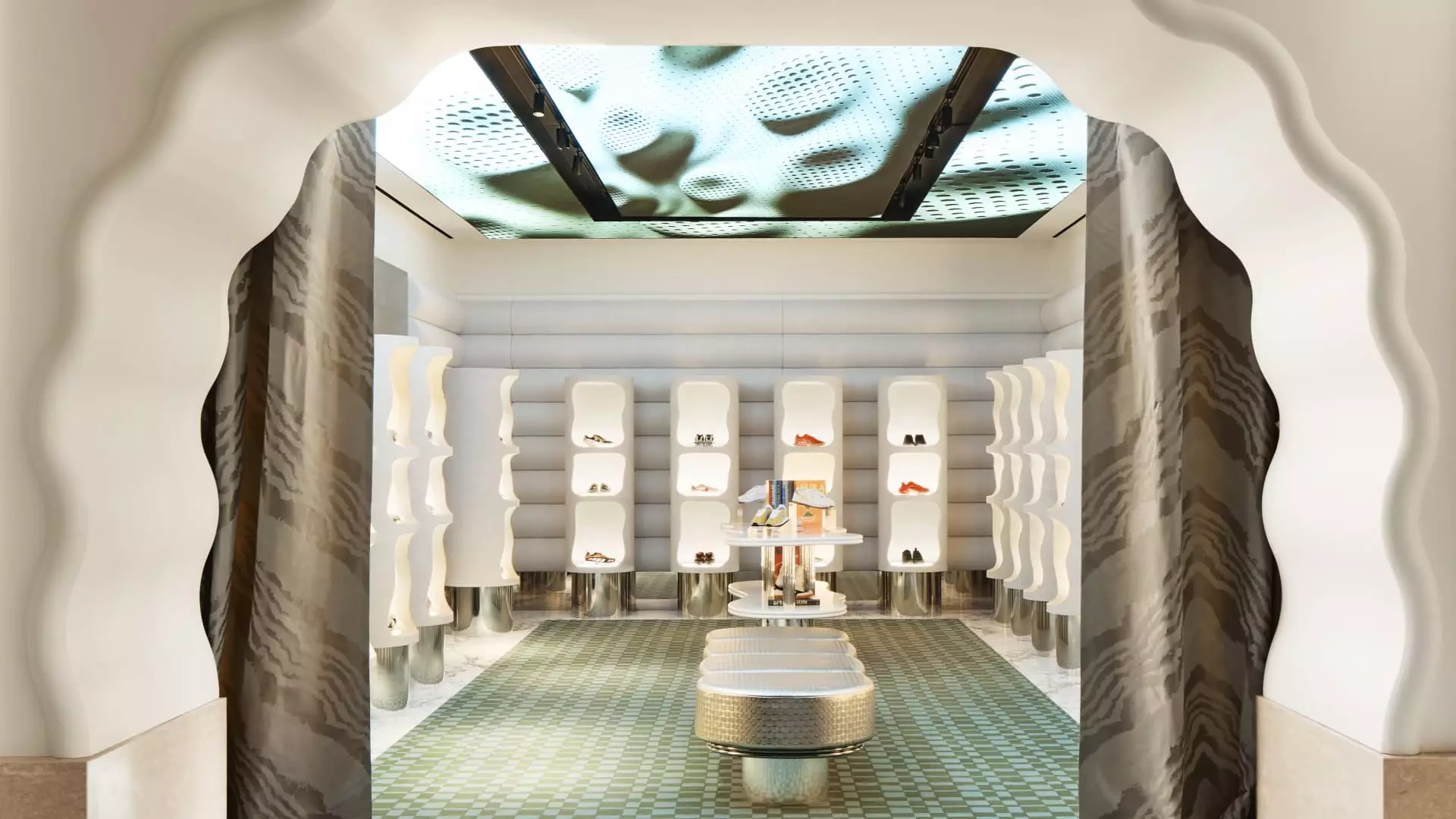In a bold move that encapsulates the allure of Parisian luxury, French department store Printemps has made its grand entrance into the New York City market. The opening of its first U.S. store in the Financial District is not merely a geographical expansion; it’s a cultural blend that evokes the elegance of France while adapting to the unique pulse of American consumerism. Spanning a whopping 55,000 square feet, this extraordinary space offers a diverse catalog of products—ranging from high-end fashion to niche beauty items—notably featuring brands that are rare or absent from U.S. shelves. This melding of exclusive offerings could potentially re-energize a luxury market that may be feeling the strain of a more conscious, discerning clientele.
A Design Paradise: The Atmosphere
The architectural blueprint of Printemps NYC draws heavily from its Parisian counterpart, but with a distinct twist that promises an unparalleled shopping experience. Elegantly inspired by the intimate charm of a Parisian apartment, the store’s interior is crafted to encourage exploration rather than mere transactional visits. For instance, the recently restored Red Room—a remarkable remnant of Art Deco history—has been ingeniously transformed into a “shoe forest.” This visually captivating install invites shoppers not only to browse footwear but also to sip on a fine glass of wine, presenting a fusion of comfort and luxury that transcends traditional retail boundaries.
The invigorating atmosphere is evidence of a larger trend in luxury retail where aesthetics and consumer engagement go hand in hand. Printemps has fully embraced experiential retail by incorporating innovative displays that mimic pop-up shops, along with diverse eateries offering staples like French pastries. This artistic yet functional environment sets the store apart from competitors, showcasing a commitment to not just meeting the consumer’s needs, but elevating their overall shopping journey.
Timing is Everything: Navigating a Shifting Market
Entering the U.S. luxury market during a time of economic uncertainty serves both as a risk and an opportunity for Printemps. Although luxury spending has slowed globally due to inflationary pressures and decreased consumer confidence—especially in key markets like China—Printemps is strategically positioning itself to capture a resilient U.S. audience. Notably, the American consumer remains the third largest spender for the brand, and the figures demonstrate a growing inclination toward luxury purchases; American sales have reportedly tripled from 2019 to 2024.
Printemps’ response to this market climate intricately weaves its offerings with the needs of both aspirational and high-end shoppers. With the inclusion of more approachable price points alongside luxury items, the store aims to attract a broader demographic. It’s an insightful strategy that recognizes that luxury isn’t just about exclusive price tags but also about creating accessible entry points into a world often perceived as elitist.
Celebrity Endorsements and Cultural Relevance
An intriguing aspect that sets Printemps apart in this competitive landscape is its connection to celebrity culture. The store showcases rare luxury brands, including the Joseph Duclos handbag favored by pop icon Taylor Swift. Such associations not only amplify brand visibility but also establish credibility within a milieu that often sways public opinion. This strategic positioning of products linked to celebrities can significantly enhance desirability, especially among younger consumers eager to emulate their idols’ lifestyles.
This blend of the aspirational and the accessible reflects a broader strategy in luxury marketing. If executed carefully, employing luminary endorsements can create compelling narratives that resonate with both locals and tourists, fostering a sense of community around the store.
Beyond Shopping: A Community Hub
While Printemps is undeniably a luxury department store, its aspirations extend beyond commerce; it aims to become a social hub. By integrating a fine dining restaurant and a café into the shopping experience, Printemps leverages the notion that shopping should engage all the senses. The plans for Maison Passerelle, headed by celebrated Chef Gregory Gourdet, further enrich this vision by creating special events and culinary experiences that invite customers to linger longer than a quick shopping trip.
In a world increasingly focused on e-commerce, creating a space that embodies social interaction and community feels revolutionary. It represents a smart adaptation to contemporary consumer desires, where transactions are often dehumanized, and the value of personal touch and community cannot be overstated.
The opening of Printemps’ first U.S. store heralds a shift in luxury retail. Rather than resisting the challenges of a fickle economy, the brand is embracing innovation, experiential design, and cultural relevance. Such a thoughtful blend might just reinvigorate the luxury market, making it not only viable but thriving in its new global home.

